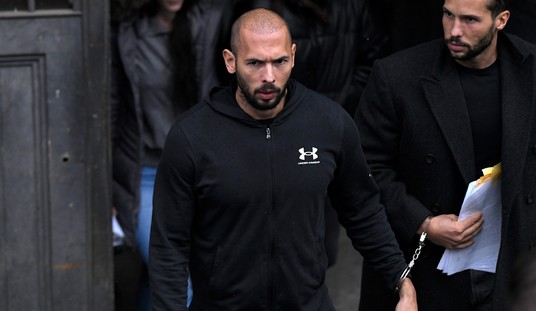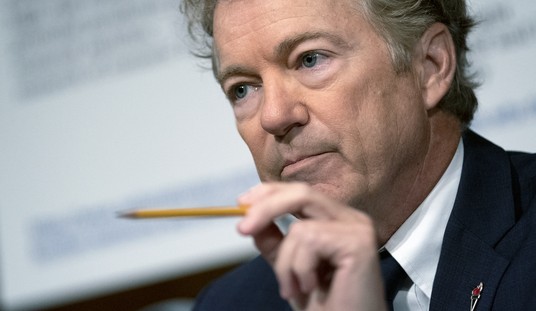On the plus side, it looks like all of the hard work members of both parties have put into undermining confidence in America’s vote has really paid off. Between “stop the steal” and Russia-collusion claims, a majority of Americans think we’ve gotten the outcome of the presidential election wrong at least once over the past four-plus years, Scott Rasmussen writes about his latest findings. However, only a tiny fringe thinks we got it wrong both times:
Most (56%) believe at least one of the last two presidents was illegitimately put into office. That includes 26% who believe Hillary Clinton was the legitimate winner in 2016 and 31% who believe Donald Trump was the legitimate winner in 2020. Another 17% are not sure who really won at least one of the elections. One percent believe the wrong person was declared the winner both times.
Given that high level of distrust, it’s no surprise that 77% of voters believe it is important to reform voting laws and procedures before the midterm elections in 2022. That view is shared by 83% of Republicans, 77% of Democrats and 71% of independent voters.
The demand for reform in general is bipartisan, but the specifics are every bit as partisan as the no-confidence votes in both elections. If the numbers hold up — and on polling, more sources are always better — it tells us that between a quarter and a third of the losing side has trouble believing it got beat. It’s also worth noting that this lack of confidence appears to be particularly specific to the presidency — even though every House seat, a third of the Senate, and various state and local offices are on the very same ballots. That sounds more like sore-loserism than a crisis of confidence.
One interesting question would be just how far out of the norm these numbers actually are. We can’t go back in time and poll after previous presidential elections, but would these numbers look much different after the elections in 2012 and 2004? In both cases, the outcomes turned out to surprise some people, and in the latter resulted in a epically foolish challenge to Ohio’s electors from Democrats.
Let’s get back to the reforms. Rasmussen finds that some provisions of the radical HR1 proposal enjoy quite a bit of bipartisan support, such as a national holiday for Election Day and even same-day registration. Some of the other provisions are deeply partisan or unpopular on a bipartisan basis:
First, HR1 would effectively ban states from requiring photo ID before voting. Among the general public, the consensus is exactly the opposite. Given a choice, 70% of voters prefer requiring that all voters provide some form of photo ID before casting a ballot. Just 12% prefer to prohibit states from requiring such identification. Another 11% believe states should set their own rules.
On a partisan basis, support for requiring all voters to show photo ID comes from 84% of Republicans, 72% of independents and 57% of Democrats.
Second, HR1 would make it illegal for states to remove voters from voter registration lists within six months of an election. By a 59% to 17% margin, voters prefer to head in the opposite direction and require states to remove from the lists people who have died or moved.
Third, HR1 would require all states to accept any mail-in ballots for up to 10 days after Election Day. However, 74% of voters disagree and favor a provision requiring that all ballots be received by Election Day. Notably, that total includes 73% of those who voted by mail in the 2020 presidential election. Requiring all ballots to be received by Election Day is supported by 88% of Republicans, 69% of Democrats and 66% of independents.
One key element to effective reform is the elimination of points of failure, or at least the prevention of adding more of them. That concept undergirds these consensus points. Voter ID and hygienic voter-roll management reduces points of failure through fraud. After watching all of the confusion that late deadlines created around this election, small wonder people see that as another point of potential failure and want it eliminated, too. Some states have begun also proposing legislation that would allow mail-in and absentee ballots to be counted prior to Election Day to facilitate the final first count in elections, which would eliminate the risk of confidence-sapping delays in determining who won an election.
If anything, states would be better advised to get away from mail-in balloting entirely, except for the normal process of absentee voting. Putting ballots in the mail, and opening the process up for “ballot harvesting,” introduce far too many points of failure. It’s also unnecessary for states with significant time windows for early voting (which Rasmussen noted most voters want to see narrowed, too). It might have been necessary in a pandemic, but it’s an error-prone process in which no rational person should have complete confidence that their vote will get counted.
Finally, one has to wonder just how much stamina legislation for reforms will have, either at the largely unconstitutional federal level or in the states which actually control voting processes. If this support for change is just a reflection of sore-loserism, it won’t sustain itself into actual legislative work. One percent is a mighty small constituency for dramatic change.








Join the conversation as a VIP Member